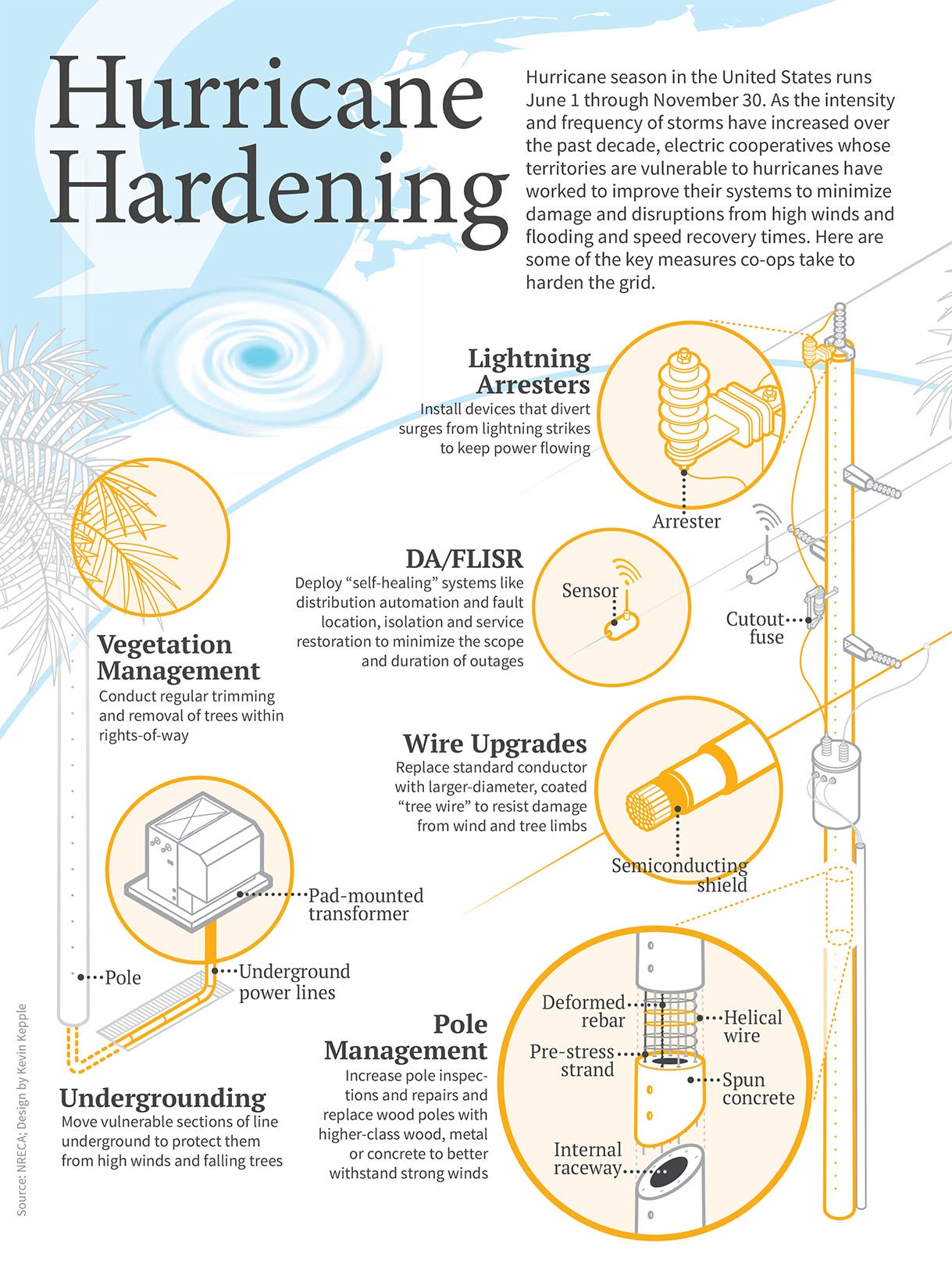Storm Hardening infographic
By Dee Crowell, KIUC Board of Directors
Last year, Kaua‘i marked the 30th anniversary of Hurricane ‘Iniki. Many of our members vividly remember the physical and personal damages caused by the storm, as well as the extended period of time without electricity.
I remember at night in Waimea, everyone had generators to power their lights and refrigerators for a few hours. At 9 p.m., the generators would go off, and it was really quiet. I was inspired that everyone put their noses to the grindstone and got back to work instead of feeling sorry for themselves. We had gone through this before with Hurricane Iwa in 1982 and knew life goes on.
A lot has changed since 1992. Local community members bought Kaua‘i Electric Co. in 2002, and it became a member-based, not-for-profit cooperative. Originally, community members were motivated to gain more autonomy over utility operations and rates. Throughout the years, diversifying power sources to improve reliability and address climate change concerns also became a priority.
June 1 marks the start of hurricane season. Many weather experts think 2023 may be an El Niño year, which could produce more hurricanes. Click here for hurricane preparedness tips.
KIUC has worked on storm hardening—physical improvements that can make utility infrastructure more resistant to weather—to increase resiliency and reliability in the event of a severe storm in the following ways:
- Diversified power sources from solar, hydro and biomass, and added KIUC’s largest conventional generating unit (Kapaia Power Station).
- Upgraded 80% of transmission circuits to steel poles, which are stronger than wood. Twenty percent of the remaining transmission circuits on wood poles have storm guy wires.
- Increased size standards for all wood poles.
- Moved KIUC’s administrative offices to Līhu‘e in a hurricane-resistant building.
- Instituted use of satellite phones, which allow staff to communicate in times of crisis.
- Deployed IT infrastructure, such as advanced metering infrastructure and an outage management system, which automatically sends the co-op information about outages rather than having to physically inspect each one.
- Signed a memorandum of understanding with Hawaiian Electric Co. to mutually assist each other in the event of an emergency.
KIUC has reported some of the best reliability statistics in the state in recent years. We are always seeking ways to improve technology, infrastructure and communication. Planning and preparing for all types of catastrophic events is just one of the many tasks our staff works on to continue to provide the best service to our members.

